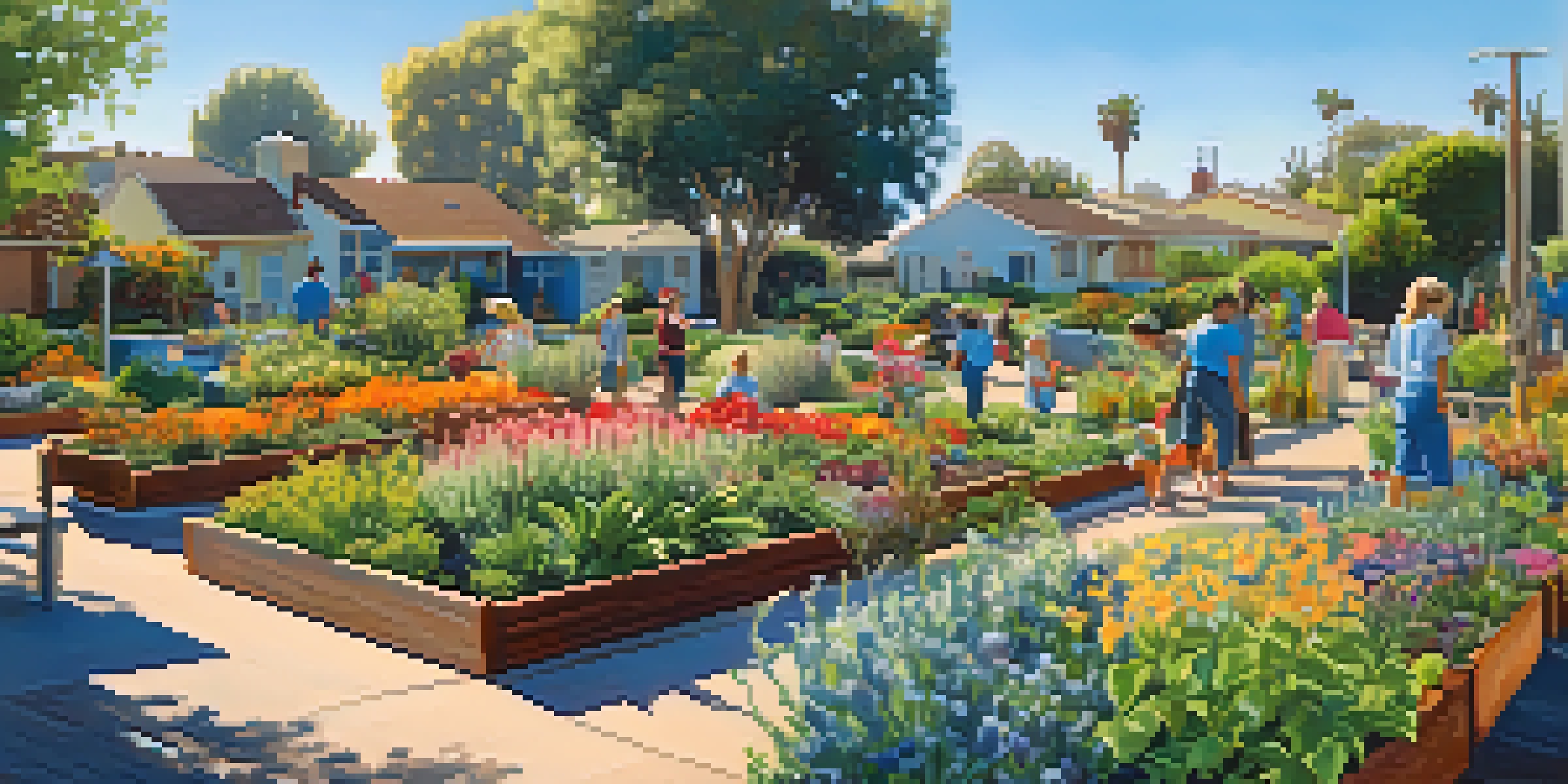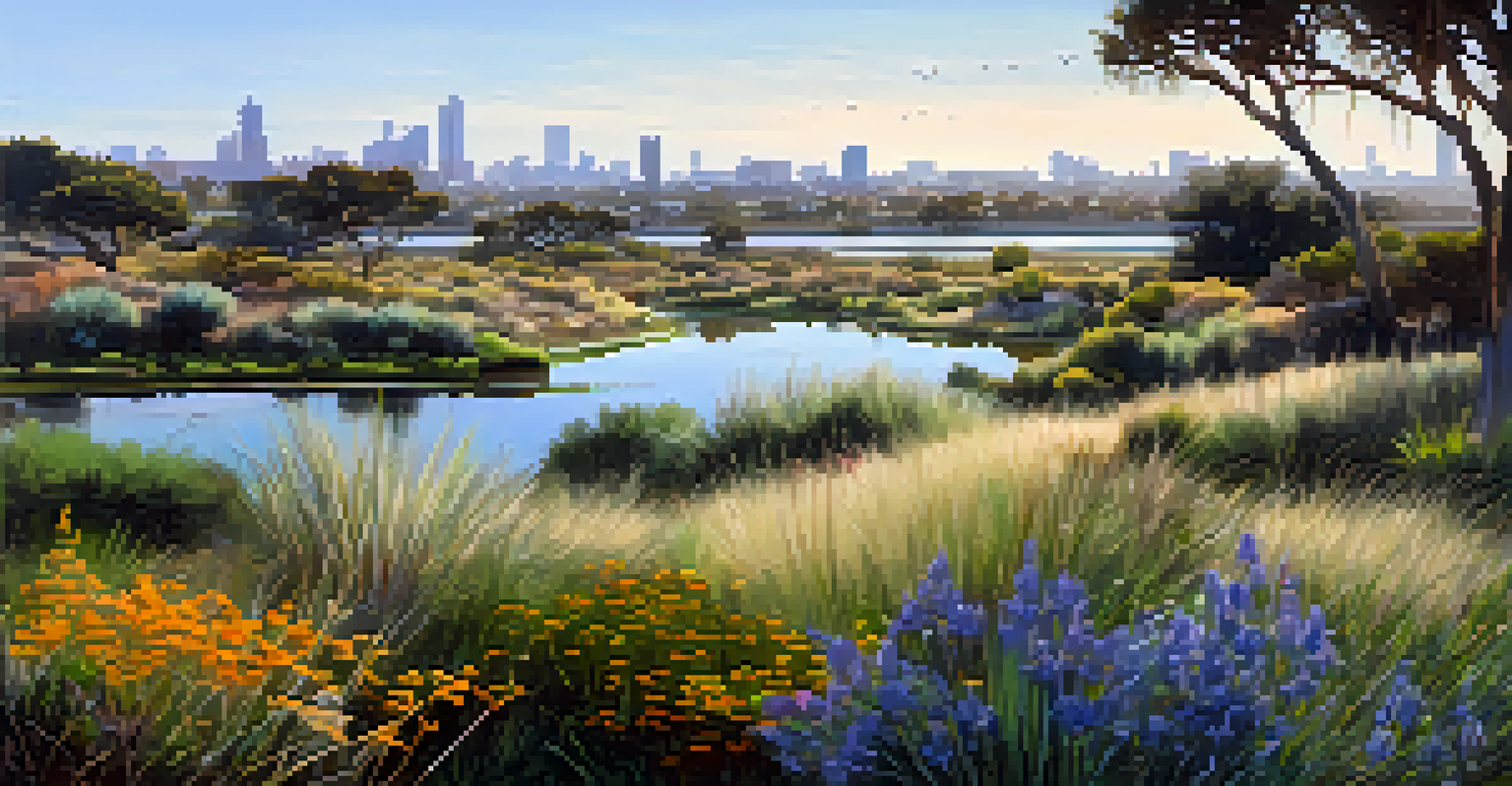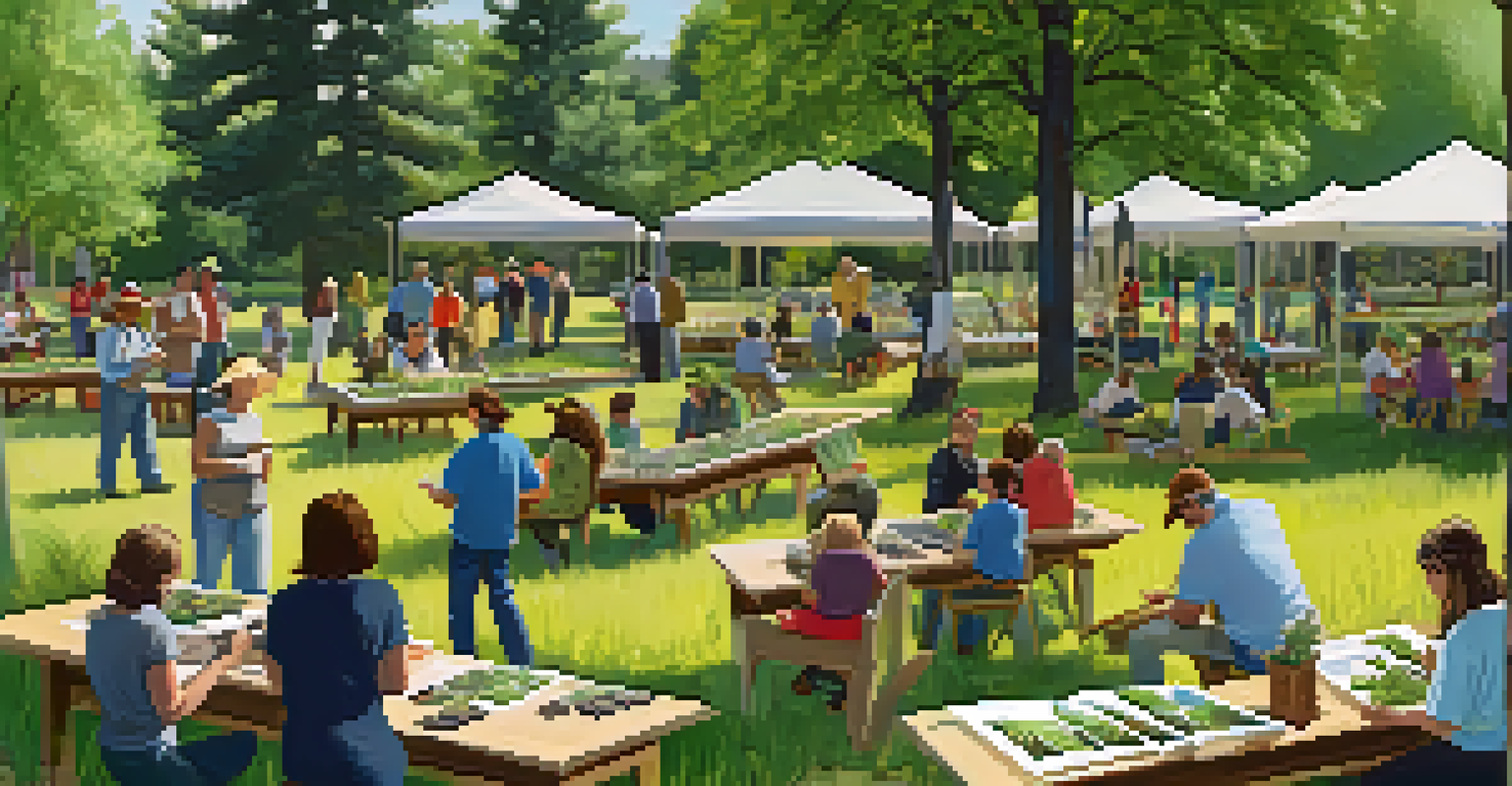Preserving Carlsbad's Native Plant Species for Future Generations

Understanding the Value of Native Plant Species
Native plants are essential to the health of local ecosystems. They provide habitat and food for wildlife, helping to maintain biodiversity. In Carlsbad, these plants have adapted to the region's unique climate and soil conditions, making them particularly resilient.
The greatest threat to our planet is the belief that someone else will save it.
By preserving native species, we can ensure that our local flora and fauna thrive. These plants have evolved alongside native animals, creating a balanced ecosystem where everything depends on one another. When we lose one species, it can have a ripple effect on the entire community.
Moreover, native plants often require less water and maintenance compared to non-native species, making them a sustainable choice for landscaping. This not only benefits individual homeowners but also contributes to the overall health of our environment.
Current Threats to Carlsbad's Native Flora
Urbanization poses one of the biggest threats to Carlsbad's native plants. As more land is developed for housing and commercial purposes, natural habitats are being destroyed. This loss of habitat can lead to a decline in native plant populations.

Invasive species also threaten local ecosystems by outcompeting native plants for resources. These invaders can spread rapidly, often taking over areas where native plants once thrived. This not only reduces biodiversity but can also disrupt the balance of the ecosystem.
Importance of Native Plants
Native plants support local ecosystems by providing habitat and food for wildlife, ensuring biodiversity and environmental health.
Climate change further exacerbates these threats, altering rainfall patterns and temperatures that native plants rely on. As conditions change, some species may struggle to survive, while others may flourish, potentially displacing the native flora we cherish.
Community Engagement in Conservation Efforts
Community involvement is crucial for the successful preservation of native plant species. Local organizations and volunteers often lead efforts to restore natural habitats and educate residents about the importance of native plants. By fostering a sense of stewardship, communities can work together to protect their natural heritage.
In every walk with nature one receives far more than he seeks.
Workshops and events can be effective ways to engage the public. For instance, planting days invite families to help restore local parks, allowing them to connect with nature while making a positive impact. These hands-on experiences can inspire a new generation to appreciate and protect their environment.
Social media platforms also play a vital role in spreading awareness. By sharing information, success stories, and tips for gardening with native plants, community members can encourage each other to take action. The more people are informed, the stronger the conservation movement becomes.
Restoration Projects in Carlsbad
Carlsbad is home to several restoration projects aimed at revitalizing native plant populations. One notable initiative involves removing invasive species and replanting native flora in degraded areas. These efforts not only restore habitats but also enhance the beauty of local parks and preserves.
Another inspiring example is the collaboration between local schools and conservation groups. Students participate in hands-on projects that involve planting native species and monitoring their growth. This not only benefits the environment but also teaches valuable lessons about ecology and responsibility.
Threats to Native Flora
Urbanization, invasive species, and climate change pose significant threats to the survival of Carlsbad's native plant populations.
These restoration projects demonstrate that positive change is possible when communities come together. The visible transformation of these areas can serve as a reminder of the importance of preserving our natural landscapes for future generations.
How to Support Native Plant Conservation
Supporting native plant conservation can be as simple as choosing to plant native species in your garden. By opting for local varieties, you can provide food and habitat for native wildlife while reducing your garden's water and maintenance needs. Every small effort counts toward creating a healthier environment.
Additionally, participating in local conservation events is another great way to get involved. Whether it's a planting day, a cleanup event, or a workshop, these activities can help you connect with others who share your passion for the environment. Together, you can make a meaningful impact.
Lastly, consider donating to local conservation organizations that focus on preserving native plants and habitats. Your support can help fund restoration projects, educational programs, and outreach initiatives aimed at safeguarding Carlsbad's rich biodiversity.
The Role of Education in Preservation
Education plays a vital role in raising awareness about the importance of native plant preservation. Schools and community programs can incorporate lessons about local ecosystems, encouraging students to appreciate and protect their environment. This knowledge can empower the next generation to take action.
Field trips to local parks or preserves can provide hands-on learning experiences that deepen understanding. By observing native plants and their interactions with wildlife, students can grasp the delicate balance of ecosystems. These experiences can leave a lasting impression that inspires future conservation efforts.
Community Engagement Matters
Active community participation in restoration projects and conservation events is crucial for preserving native plant species and fostering environmental stewardship.
Moreover, educational resources like brochures, websites, and social media can help disseminate information about native plants. The more accessible this information is, the more likely people are to engage in conservation efforts. Knowledge truly is power when it comes to protecting our natural heritage.
Looking Ahead: A Vision for Future Generations
As we look towards the future, it’s essential to envision a landscape where native plants thrive alongside urban development. By integrating green spaces and native plant gardens into community planning, we can create a harmonious balance between nature and human activity. This vision ensures that future generations can enjoy the beauty and benefits of native flora.
Advocacy for policies that protect native plant habitats is also crucial. Local governments can implement zoning laws that preserve green spaces and promote sustainable landscaping practices. Such initiatives can significantly impact the health of our ecosystems.

Ultimately, fostering a culture of respect and appreciation for our natural environment will be key. By nurturing a collective commitment to preserving Carlsbad's native plant species, we can ensure that these invaluable resources continue to enrich our lives and the planet for years to come.